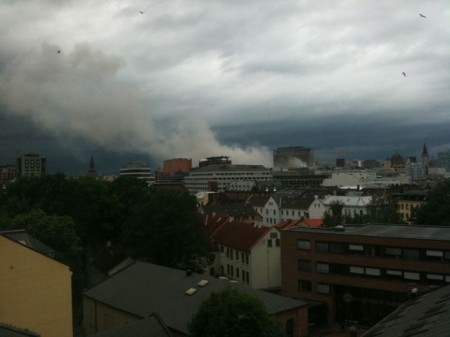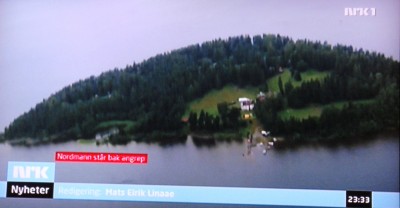Norway was shocked into recognizing its own vulnerability to a terrorist attack on the afternoon of Friday, July 22, 2011. Here’s the chain of events behind Thursday’s memorials to victims, 10 years after a young Norwegian right-wing extremist angry with the Labour Party-led government detonated a powerful home-made bomb just outside the high-rise Office of the Prime Minister in downtown Oslo.

The under-signed was just a few blocks away at the time, 3:25pm, guiding old friends visiting from California on a tour of Norway’s capital in the midst of summer holidays. The weather was not summery, instead chilly and rainy as we walked from the Parliament building towards the historic Akershus Fortress. The explosion was so loud that everyone jumped, and it didn’t take long before debris, paper and glass started raining down on us as well, and sirens blared.
RELATED STORY: Bells to toll for terror victims
Eight people in and around the government complex were later reported to have been killed instantly and 10 were seriously injured and rushed to hospital. Scores more suffered less-serious injuries and mental health issues later. An estimated 325 people were in the immediate area of the blast, either inside the bombed buildings or outside them. Prime Minister Jens Stoltenberg, leader of the Labour Party at the time, was at home that afternoon, preparing a speech to deliver at the Labour youth organization’s summer camp the next day.
The Norwegian encyclopedia Store norske leksikon‘s official version of events relates that the first patients arrived at Oslo’s Ullevål Hospital at 3:51pm, while 190 were treated at the emergency clinic Legevakt not far from the bomb site. All who were brought in for medical treatment survived.
Around two hours later, just before 5.30pm, police received their first reports of shooting on the island of Utøya in the Tyrifjord, around an hour’s drive from downtown. There were 564 people on the island, taking part in the annual summer camp organized by the Labour Party’s youth organization AUF. Heavily armed terrorist Anders Behring Breivik, dressed to look like a police officer, had driven from the bombsite directly to the pier at Utvika, from where a ferry took him to the island after he’d claimed he’d been sent to ensure security. He’s logged as arriving on Utøya at 5:17pm. He started shooting four minutes later.

He then went on a deadly rampage that lasted until special forces arrived on the island and he surrendered at 6:34pm. For an hour and 13 minutes he roamed the island, shooting most everyone in sight. A total of 69 people were killed, 29 critically wounded and hundreds more injured as they fled the gunman. More than 200 were eventually plucked up from the cold waters of the Tyrifjord by people on the mainland who sailed out in their own boats to try to help. Several managed to swim the entire 550 meters from the island to the shores of Utvika.
A total of 21 critically wounded were rushed to Norway’s largest hospital, Ullevål, and eight to the hospital in suburban Bærum. Of those killed, 33 were under the age of 18. The two youngest victims were 14.
Breivik, who claimed to be intent on eliminating the next generation of Labour Party politicians, was later ruled sane at the time of his twin attacks and sentenced to Norway’s longest sentence of 21 years in prison with a special provision that can keep him in custody for life. Debate over the lack of police preparedness for such an attack went on for years, and has led to much more investment in security measures, helicopters and coordination between the police and military.
Norway initially reacted to the terror with roses and large, peaceful gatherings at which Stoltenberg declared that the best way to respond was with “more democracy, more openness and love.” That was welcome at the time, but hundreds of victims now claim they never felt they were allowed to express their anger or frustration over a lack of public debate about what motivated Breivik’s hatred and extremism. Many never felt they got the support or help they needed in the years after the attacks. The political ideology behind the attacks went largely unaddressed, forcing a change in the public conversation around July 22 in recent months. That’s likely to be addressed in speeches at the 10th anniversary memorials on Thursday.
newsinenglish.no/Nina Berglund

